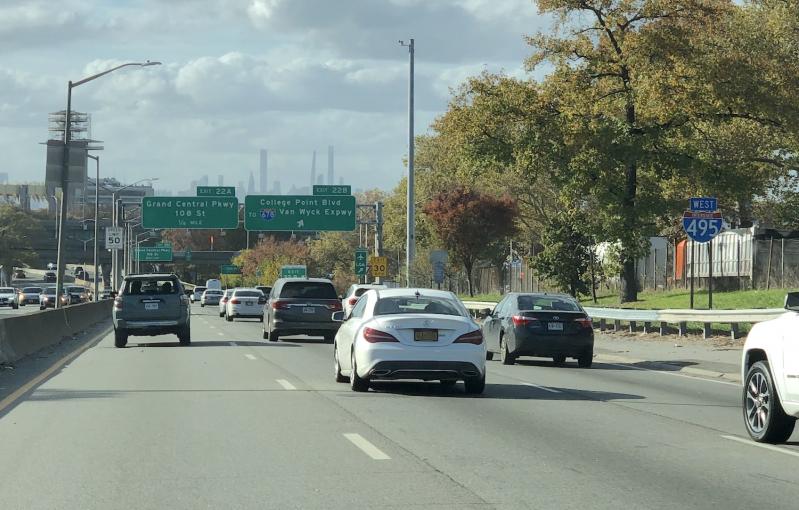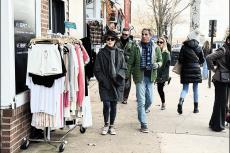Congestion pricing is coming to New York City, and it’s leaving some East Enders with more than the sniffles.
The new tolling plan targets New York City’s Midtown Manhattan and aims to ease traffic congestion while simultaneously decreasing pollution. The program will charge drivers a fee upward of $23 to enter Manhattan south of 60th Street. The first-of-its-kind project has been years in the making, and with final approval granted by the Federal Highway Administration, discussions surrounding the final toll rates and exemptions have begun. According to Gov. Kathy Hochul, the money collected from the tolling plan, which is expected to be around $1 billion annually, will be used to improve New York City’s public transportation, including subways and trains.
According to the Metropolitan Transportation Authority, some 700,000 cars and trucks flood into Lower Manhattan every day, making it one of the busiest places in the world. The toll seeks to reduce the number of vehicles in the congestion zone by around 10 percent every day. Some New Yorkers are concerned that the plan will divert much of that traffic to public transportation, but Joana Flores, an M.T.A. media liaison, is not concerned about the tolling plan overwhelming train lines when in effect.
“There are several different tolling structures that we are studying, and none that have been decided or recommended would have different effects on ridership,” Ms. Flores said. “Ridership levels are still under pre-pandemic numbers, and it is projected that the maximum increase in ridership is at most 1.9 percent, according to our tolling scenarios.” Ms. Flores does not want anyone to be concerned about congestion traveling on train lines, but assures commuters that “with the opening of Grand Central Madison, [we] are always looking at emerging trends, if there are any, when it comes to ridership and how many people are traveling.” She said the M.T.A. is constantly making decisions based on those statistics.
Some South Fork residents have expressed concerns about how the plan might impact their travel to and from New York City for work, health care, entertainment, and other aspects of daily life.
Jason Nower, who works at Wainscott’s LTV Studios and does freelance film and television work in the city, does not have confidence in Governor Hochul’s new program.
“The problem I have with it is that it completely misses the structure of the problems that have caused this entire situation. It is a classist piece of complete failure,” Mr. Nower said. “The entire thing is being framed as the working class wanting to drive to Manhattan, but who wants to drive to Manhattan? I know many people and individuals who need to drive to Manhattan — construction workers, service workers, people seeking medical attention, people who do not feel safe on the subways anymore because crime has skyrocketed — all aspects of this issue are structural, and the toll is just squeezing the working class while calling it progress.”
Mr. Nower is concerned about how the toll will affect the cost of his work given his need, not want, to travel to New York by car. “If there were a way for me to travel on the subway I would, but the hundreds of pounds of camera equipment I need for my job is very difficult to take on the subway.”
He does not see how the plan could “effectively mitigate pollution or transportation. It is like a bathroom tax — it doesn’t mean you are going to go to the bathroom less, it is just one more thing you have to pay for.”
But, David Stellings, a resident of New York City and part-time resident of East Hampton, is optimistic about the plan’s ability to solve a century-long problem. “Traffic congestion in Midtown and Lower Manhattan is even worse than it was pre-pandemic, presumably because more people are now driving or riding to their jobs in the city instead of taking public transportation,” Mr. Stellings said. “Congestion pricing is one of the very few ways to reduce traffic in a city center. Toll plans similar to the one Manhattan is implementing have proven successful in London, Stockholm, Singapore, and other cities where traffic and emissions were significantly reduced.”
According to the Central London Second Impacts Monitoring Report, just one year after London implemented congestion pricing, traffic congestion decreased by 30 percent and average speeds increased by the same rate. Mr. Stellings believes that “it is not a perfect or costless system, but it is probably the best option available to address a significant problem.”
Dr. Dana Stern, a resident of the Hamptons with a medical practice in New York City, has been commuting from the East End to Manhattan on a part-time basis for about 10 years. “The traffic patterns have certainly changed and congestion in Manhattan is a challenging and frustrating issue,” she said. As a result of the toll, Dr. Stern said she plans on taking the bus “more often,” but said the railroad schedule is rarely convenient for her commute — a flaw in the program’s hope to divert congestion to public transportation.
“The expense is significant for hard-working commuters and taxi and Uber drivers. Everyone wants to cut back on pollution and congestion, but the problem is complex, and may end up hurting commuters from the outer boroughs” if not done correctly, she said. Dr. Stern said she wants “to be optimistic and agrees that something needs to be changed,” but is “not optimistic that the plan will be as effective as hoped.”
As the law develops and is transformed, more exemptions are being proposed to mitigate the effect on the working class. At present, lawmakers plan to allow Manhattanites who live south of 60th Street to discount the cost of the toll from their income taxes, and on exempting traffic on the F.D.R. Drive and West Side Highway from the charge.




